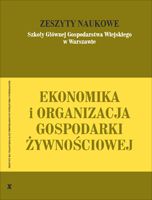Przemiany w sferze ubóstwa w Niemczech
Main Article Content
Abstrakt
The paper focuses on poverty in the German families. Although there is enormous wealth in Germany, a significant proportion of German citizens live in poverty. The research was carried out using the international standard definition of relative poverty - which is an income of less than 50% of national average earnings. The study results reveal a rising tendency in the phenomenon after 1990 as a result of German unification. Poverty in the Eastern Lands is more widespread, the number of unemployed people is here relatively larger, households have bigger debts and lack of suitable accommodation is more common. In the country as a w hole, the structure of poverty has recently changed. At present, poverty is distributed between all types of households and figures show that it is growing amongst children and teenagers. Overall, the proportion of elder citizens living in poverty has been relatively lower since better welfare. In Germany, several programs have been implemented to reduce the social inequality and poverty. A broad range of policy fields are aimed at a fairer distribution of wealth and social benefits guaranteed by the Constitution.
Article Details
Jak cytować
Zajączkowska, M., & Stańko, A. (2002). Przemiany w sferze ubóstwa w Niemczech. Zeszyty Naukowe SGGW - Ekonomika I Organizacja Gospodarki Żywnościowej, (47), 37–52. https://doi.org/10.22630/EIOGZ.2002.47.20
Bibliografia
Bieback K.J.; Milz H., (1995) Neue Arnut, Campus, Frankfurt/Main, New York.
Grundinformationen und Daten zur Sozialhilfe Berlin 1999.
Lebenslagen in Deutschland. Der erste Arnuts - und Reichtumsbericht der Bundesregierung, Berlin 2000.
Sozialabudget 2001, Bundesregierung, Berlin 2002.
Statystyki
Downloads
Download data is not yet available.
Rekomendowane teksty
Inne teksty tego samego autora
- Marcin Idzik, Aneta Stańko, Ekonomiczne uwarunkowania oraz tendencje zachowań konsumentów na rynku dóbr FMCG , Zeszyty Naukowe SGGW - Ekonomika i Organizacja Gospodarki Żywnościowej: Nr 59 (2006)
- Maria Zajączkowska, Aneta Stańko, Sfera ubóstwa w Polsce w latach 1994-2000 , Zeszyty Naukowe SGGW - Ekonomika i Organizacja Gospodarki Żywnościowej: Nr 46 (2002)
- Agnieszka Borowska, Maria Zajączkowska, Przemiany w spożyciu żywności w wybranych krajach CEFTA , Zeszyty Naukowe SGGW - Ekonomika i Organizacja Gospodarki Żywnościowej: Nr 38 (2000)
- Maria Zajączkowska, Agnieszka Borowska, Zmiany w spożyciu mięsa i ryb w gospodarstwach domowych w Polsce w latach 1988-1998 , Zeszyty Naukowe SGGW - Ekonomika i Organizacja Gospodarki Żywnościowej: Nr 43 (2001)
- Aneta Stańko, Przedsiębiorczość jako czynnik rozwoju obszarów wiejskich , Zeszyty Naukowe SGGW - Ekonomika i Organizacja Gospodarki Żywnościowej: Nr 79 (2009)
- Aneta Stańko, Wykluczenie społeczne z rynku pracy w krajach Unii Europejskiej , Zeszyty Naukowe SGGW - Ekonomika i Organizacja Gospodarki Żywnościowej: Nr 72 (2008)
- Maria Zajączkowska, Podaż i spożycie kawy w Polsce w latach 1950-1995 , Zeszyty Naukowe SGGW - Ekonomika i Organizacja Gospodarki Żywnościowej: Nr 29 (1997)
- Aneta Stańko, Poziom wydatków na edukację w krajach członkowskich Unii Europejskiej , Zeszyty Naukowe SGGW - Ekonomika i Organizacja Gospodarki Żywnościowej: Nr 73 (2009)
- Maria Zajączkowska, Podaż i spożycie herbaty w Polsce w latach 1950-1995 , Zeszyty Naukowe SGGW - Ekonomika i Organizacja Gospodarki Żywnościowej: Nr 29 (1997)
- Aneta Stańko, Poziom ubóstwa w krajach nowo przyjętych do Unii Europejskiej , Zeszyty Naukowe SGGW - Ekonomika i Organizacja Gospodarki Żywnościowej: Nr 53 (2004)





